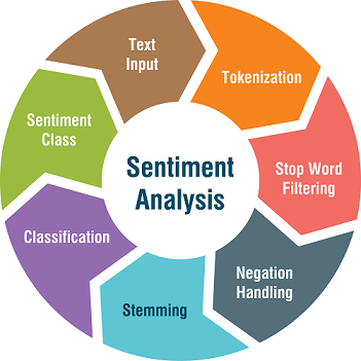Analysing Text
Jon Reades - j.reades@ucl.ac.uk
1st October 2025
Dummy Values?
What’s wrong with this approach?1
| Topic Text | Topic Number | |
|---|---|---|
| Article 1 | News | 1 |
| Article 2 | Culture | 2 |
| Article 3 | Politics | 3 |
| Article 4 | Entertainment | 4 |
Dummy Variables Columns!
| News | Culture | Politics | |
|---|---|---|---|
| Article 1 | 1 | 0 | 0 |
| Article 2 | 0 | 1 | 0 |
| Article 3 | 0 | 0 | 1 |
| Article 4 | 0 | 0 | 0 |
One-Hot Encoders
| News | Culture | Politics | Entertainment | |
|---|---|---|---|---|
| Article 1 | 1 | 0 | 0 | 0 |
| Article 2 | 0 | 1 | 0 | 0 |
| Article 3 | 0 | 0 | 1 | 0 |
| Article 4 | 0 | 0 | 0 | 1 |
The ‘Bag of Words’
Just like a one-hot (binarised approach) on preceding slide but now we count occurences:
| Document | UK | Top | Pop | Coronavirus |
|---|---|---|---|---|
| News item | 4 | 2 | 0 | 6 |
| Culture item | 0 | 4 | 7 | 0 |
| Politics item | 3 | 0 | 0 | 3 |
| Entertainment item | 3 | 4 | 8 | 1 |
BoW in Practice
Enter, stage left, scikit-learn:
from sklearn.feature_extraction.text import CountVectorizer
vectorizer = CountVectorizer()
# Non-reusable transformer
vectors = vectorizer.fit_transform(texts)
# Reusable transformer
vectorizer.fit(texts)
vectors1 = vectorizer.transform(texts1)
vectors2 = vectorizer.transform(texts2)
print(f'Vocabulary: {vectorizer.vocabulary_}')
print(f'All vectors: {vectors.toarray()}')TF/IDF
Builds on Count Vectorisation by normalising the document frequency measure by the overall corpus frequency. Common words receive a large penalty:
\[ W(t,d) = TF(t,d) / log(N/DF_{t}) \]
For example:
- If the term ‘cat’ appears 3 times in a document of 100 words then Term Frequency given by: \(TF(t,d)=3/100\), and
- If there are 10,000 documents and cat appears in 1,000 documents then Normalised Document Frequency given by: \(N/DF_{t}=10000/1000\) so the Inverse Document Frequency is \(log(10)=1\),
- So IDF=1 and TF/IDF=0.03.
TF/IDF in Practice
from sklearn.feature_extraction.text import TfidfVectorizer
vectorizer = TfidfVectorizer()
# Non-reusable form:
vectors=vectorizer.fit_transform(texts)
# Reusable form:
vectorizer.fit(texts)
vectors = vectorizer.transform(texts)
print(f'Vocabulary: {vectorizer.vocabulary_}')
print(f'Full vector: {vectors.toarray()}')Term Co-Occurence Matrix (TCM)
Three input texts with a distance weighting (\(d/2\), where \(d<3\)):
- the cat sat on the mat
- the cat sat on the fluffy mat
- the fluffy ginger cat sat on the mat
| fluffy | mat | ginger | sat | on | cat | the | |
|---|---|---|---|---|---|---|---|
| fluffy | 1 | 1 | 0.5 | 0.5 | 2.0 | ||
| mat | 0.5 | 1.5 | |||||
| ginger | 0.5 | 0.5 | 1.0 | 1.5 | |||
| sat | 3.0 | 3.0 | 2.5 | ||||
| on | 1.5 | 3.0 | |||||
| cat | 2.0 | ||||||
| the |
How Big is a TCM?
The problem:
- A corpus with 10,000 words has a TCM of size \(10,000^{2}\) (100,000,000)
- A corpus with 50,000 words has a TCM of size \(50,000^{2}\) (2,500,000,000)
Cleaning is necessary, but it’s not sufficient to create a tractable TCM on a large corpus.
Enter Embeddings
Typically, some kind of 2 or 3-layer neural network that ‘learns’ how to embed the TCM into a lower-dimension representation: from \(m \times m\) to \(m \times n, n << m\).
Similar to PCA in terms of what we’re trying to achieve, but the process is utterly different.
Sentiment Analysis
Requires us to deal in great detail with bi- and tri-grams because negation and sarcasm are hard. Also tends to require training/labelled data.
Clustering
| Cluster | Geography | Earth Science | History | Computer Science | Total |
|---|---|---|---|---|---|
| 1 | 126 | 310 | 104 | 11,018 | 11,558 |
| 2 | 252 | 10,673 | 528 | 126 | 11,579 |
| 3 | 803 | 485 | 6,730 | 135 | 8,153 |
| 4 | 100 | 109 | 6,389 | 28 | 6,626 |
| Total | 1,281 | 11,577 | 13,751 | 11,307 | 37,916 |
Topic Modelling
Learning associations of words (or images or many other things) to hidden ‘topics’ that generate them:
Word Clouds
Additional Resources
- One-Hot vs Dummy Encoding
- Categorical encoding using Label-Encoding and One-Hot-Encoder
- Count Vectorization with scikit-learn
- Corpus Analysis with Spacy
- The TF*IDF Algorithm Explained
- How to Use TfidfTransformer and TfidfVectorizer
- SciKit Learn Feature Extraction
- Your Guide to LDA
- Machine Learning — Latent Dirichlet Allocation LDA
- A Beginner’s Guide to Latent Dirichlet Allocation(LDA)
- Analyzing Documents with TF-IDF
Basically any of the lessons on The Programming Historian.



